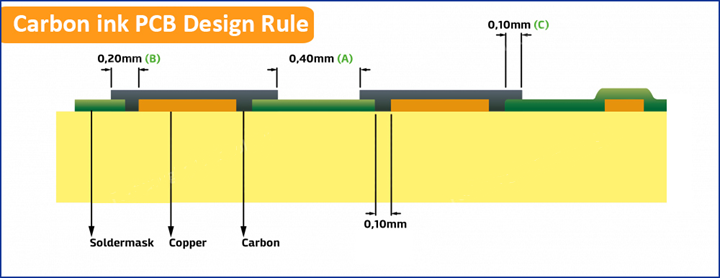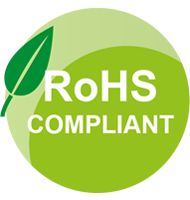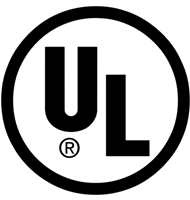-
 206-310-3624
206-310-3624
-
 support@pcbinternational.com
support@pcbinternational.com
Carbon ink PCB, also called carbon conductive PCB, are circuit boards with carbon ink applied onto the copper pad, replacing some of the more common solder plating such as Electroless Nickel Immersion Gold (ENIG) or Hot Air Solder Leveling – Lead Free (HASL).
The carbon serves as a conductor to connect two traces on PCB board, and a resistor between the traces or traces and components. The key factor in carbon ink PCB production is to control the printing, baking and resistance control. The carbon ink can be printed onto flexible circuit, rigid-flex board and rigid PCB, such as polyimide, polyester, FR-4, FR-5 and PTFE laminates. Carbon ink can offer resolutions as fine as 100μm trace width and spacing.
Carbon Ink PCBs are widely used for printed circuit boards deployed in the following applications:
One particular area where Carbon Ink PCBs excel at is the application of rubber keypad, commonly found in television remote controllers, garage door controllers, etc. A typical conductive rubber keypad involves creating angled webbing around a switch center. When the switch is pressed, the webbing deforms and produces a tactile response. As soon as the switch is no longer under pressure, the webbing returns to its neutral position.
The carbon tactile key comes into play when making electronic switches, as a carbon pill is placed at the switch center’s base. If you have ever taken apart (or broken) a TV remote controller, you may notice on the printed circuit boards, under each rubber that you used to press, is a little circular dot that can be pressed down ever so slightly. This carbon tactile key contacts the PCB when the web is pressed; a rather simple and ingenious solution that is both durable and cost-effective.

| Design Rule | Alphabet | Value |
|---|---|---|
| Design Carbon to Carbon Spacing | A | 0.4mm (16mil) |
| Min Carbon Line Width | -- | 0.3mm (12mil) |
| Min Carbon on Copper Overlap | B | 0.2mm (9mil) |
| Min Carbon on Solder Mask Overlap | C | 0.1mm (4mil) |
These design rules specify you must have a minimal isolation or spacing of 0.8mm (16mil) between the copper elements of a typical carbon finger contacts. With advanced carbon PCB manufacturing capability, our mininum values can be smaller but with longer lead time. For example, the advanced min carbon to carbon spacing we can reach is 0.3mm (12mil).

Red = Copper Green/Light Blue = Soldermask Opening Dark Blue = Carbon Ink
Hard gold is an expensive PCB surface finish, which can be replaced by the conductive carbon ink for certain applications to achieve significant savings on manufacturing cost. Carbon ink circuit board offers low cost and high robustness, due to the much lower material cost of carbon ink, and an easier application/plating process when compared to hard gold: instead of a lengthy electrolytic bath, carbon ink utilizes a simple screen-printing process.
● When it comes to robustness, dry carbon ink is usually hard enough to withstand more than 1million keyboard push button operations, or more than 100 insertion operations of edge connector without showing wear or increased resistance. For carbon pad PCB, it’s also noted that carbon ink circuit surface must have good viscosity stability for warmer climates and require good printing properties to give even coverage over the copper button pads.
● One disadvantage of carbon ink printed circuit boards is the cured and dry carbon conductive ink must be able to withstand process steps including solvent cleaning and soldering without loss of adhesion and conductivity, therefore extra care and different cleaning steps should be considered when assembling carbon ink printed circuit boards.
PCB International proudly offers carbon ink printed circuit boards for your PCB needs. For clients wishing to utilize carbon ink, PCB International strongly recommends sending the board requirements and Gerber files for review, and to obtain a quote, at Support@PCBInternational.com




